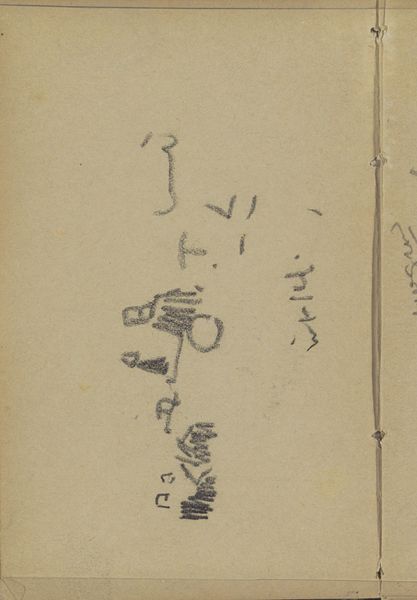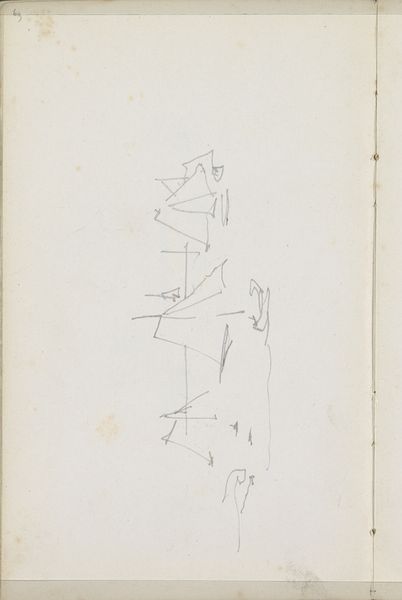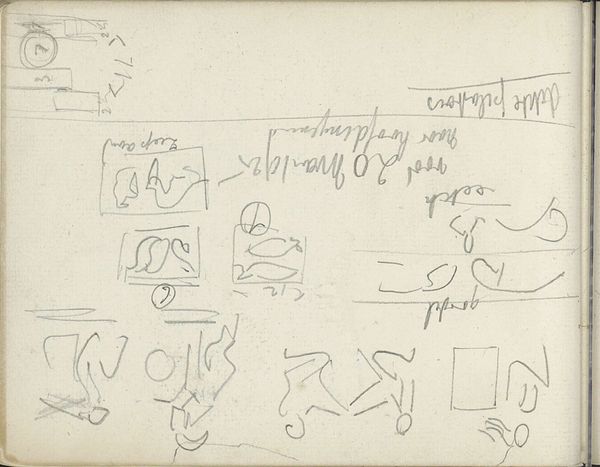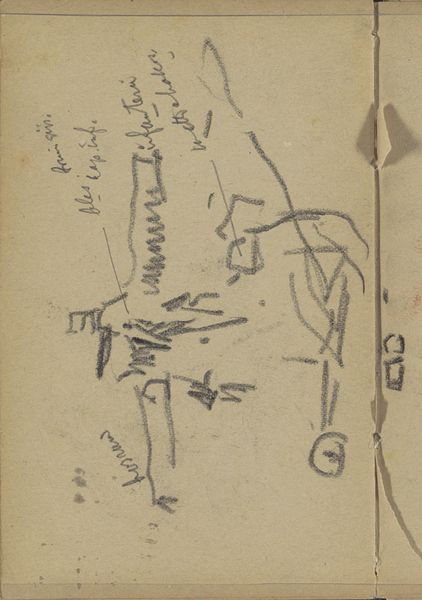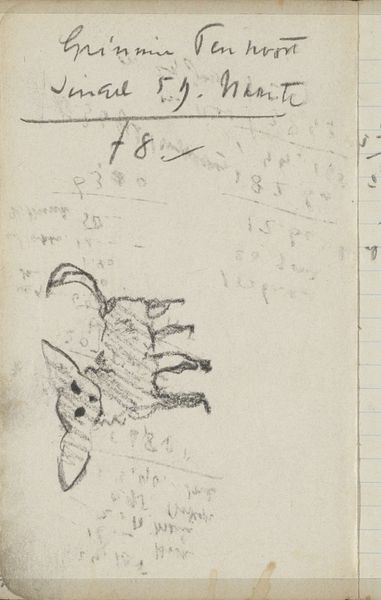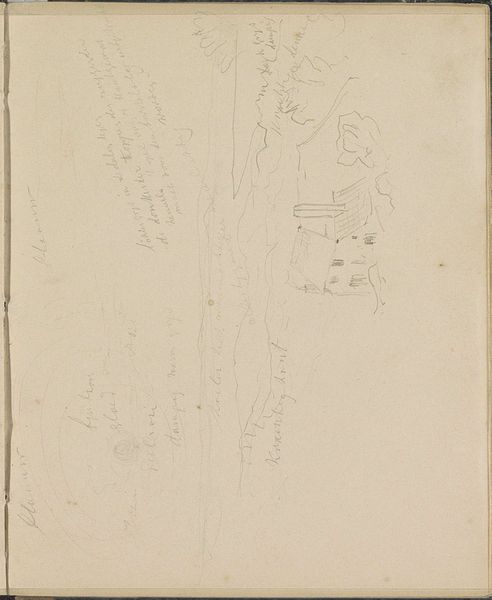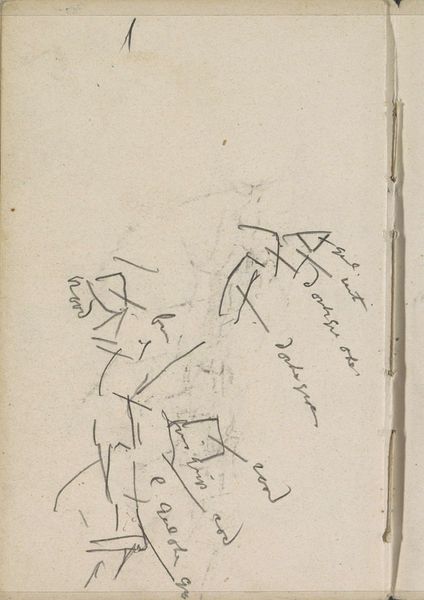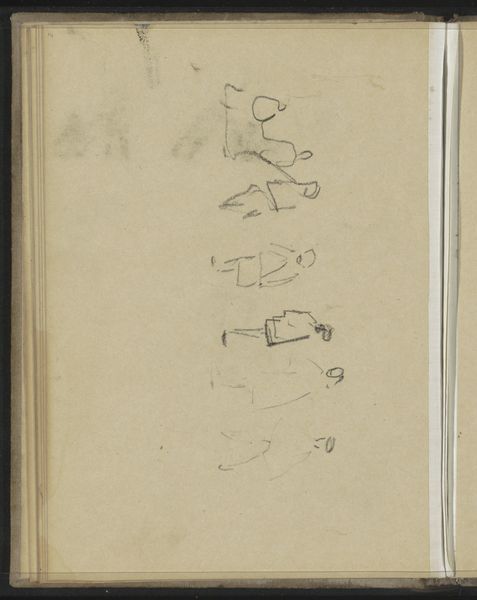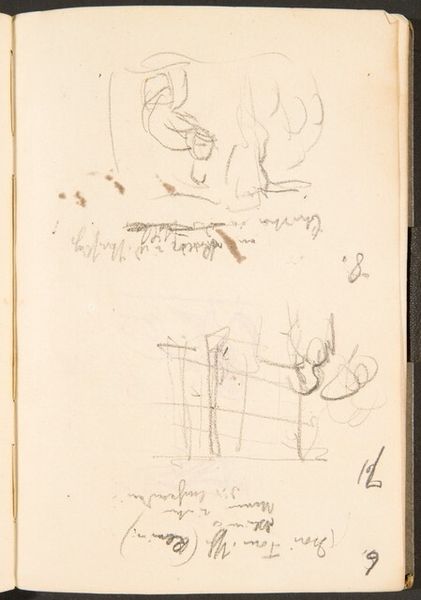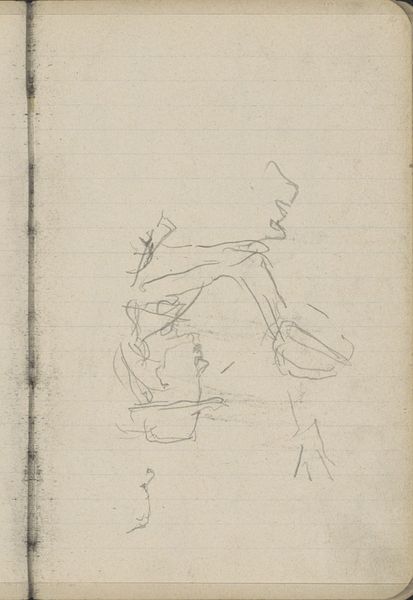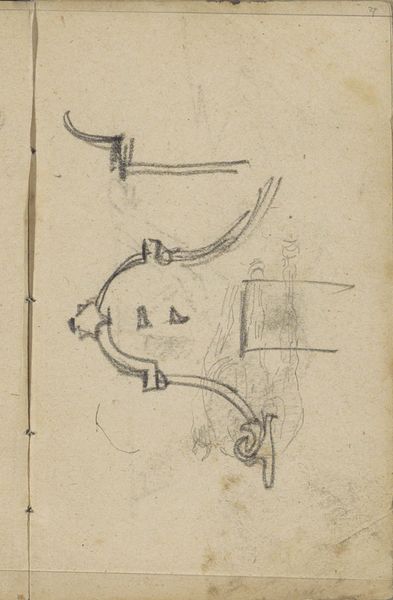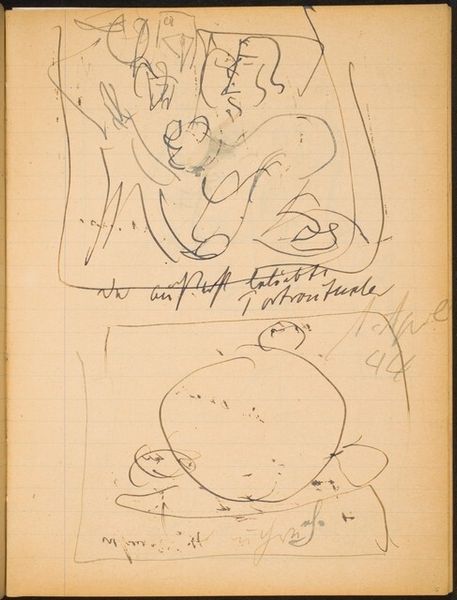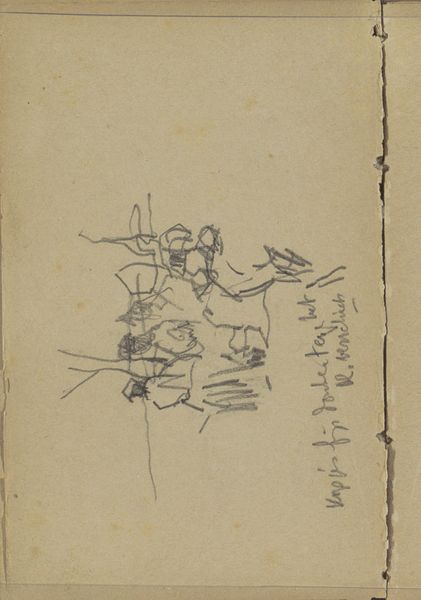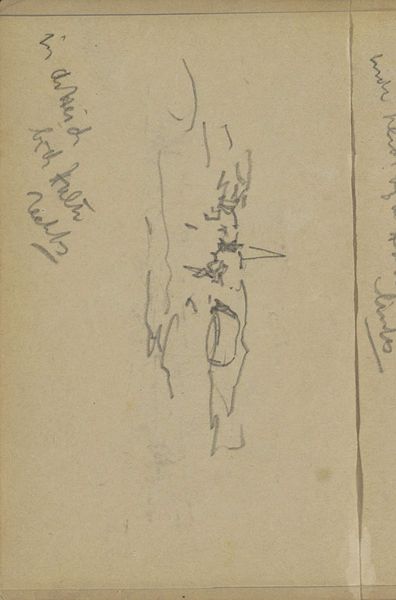
drawing, paper, pencil
#
drawing
#
quirky sketch
#
sketch book
#
hand drawn type
#
figuration
#
paper
#
personal sketchbook
#
idea generation sketch
#
sketchwork
#
sketch
#
pencil
#
ink colored
#
sketchbook drawing
#
storyboard and sketchbook work
#
sketchbook art
#
realism
Copyright: Rijks Museum: Open Domain
Editor: This is “Studieblad met varkens,” or "Study Sheet with Pigs," by Willem Witsen, made sometime between 1887 and 1891. It's a pencil drawing on paper, and it’s held at the Rijksmuseum. The sketch-like quality makes it seem really informal, almost like peeking into the artist’s private thoughts. What strikes you about this piece? Curator: The apparent randomness is precisely what captivates me. On one level, we see rudimentary arithmetic, maybe Witsen practicing calculations or idly doodling during a tedious task. Juxtapose that with these quickly rendered pig studies. Considering the socio-political context of the late 19th century, when industrialization was rapidly changing agricultural landscapes, how might we interpret this juxtaposition of mundane calculation and rural imagery? Editor: I guess it could be about the tension between the old ways of life and the new, with numbers representing the cold efficiency of industrial progress versus the organic world of farming, represented by the pigs. Do you think Witsen was trying to make some kind of statement? Curator: Perhaps, but I hesitate to ascribe a singular, overt intention. This page might simply be a commonplace book reflecting the artist's observations and concerns. What power dynamic might exist with representing these sketches today in the halls of the museum? Editor: That's a really good question! The sketchbook itself becomes an artifact and almost fetishized, I see. Even these random, perhaps inconsequential scribbles gain a weight and an authority by being on display in the museum. Curator: Exactly. The institutional frame elevates the ordinary. It prompts us to ask: whose stories are preserved and how? Editor: This has been super helpful! Thinking about the institution's role makes me look at art with new eyes! Curator: And that's the most important thing – to keep asking questions.
Comments
No comments
Be the first to comment and join the conversation on the ultimate creative platform.
